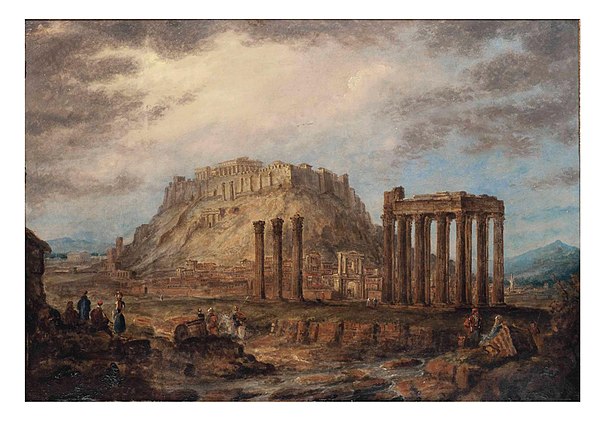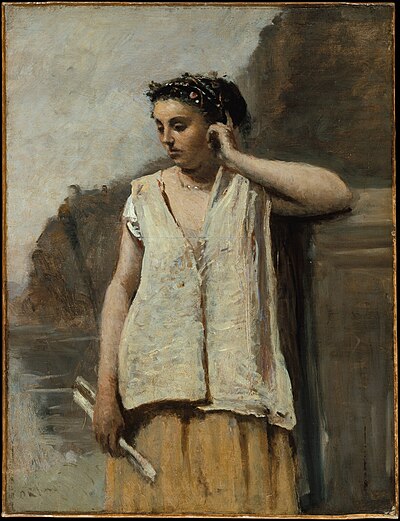m Tweaked language. |
m Added detail. |
||
| (One intermediate revision by the same user not shown) | |||
| Line 1: | Line 1: | ||
{{:Epic Poetry/Tabs}} | {{:Epic Poetry/Tabs}} | ||
{{SHORTDESC:Epic poetry possesses several defining characteristics.}} | |||
{{Large|Epic Poetry Characteristics and Conventions}} | {{Large|Epic Poetry Characteristics and Conventions}} | ||
{{dc|E}}{{start|pic poetry, a genre renowned for its grand narratives}} and heroic protagonists, encompasses | {{dc|E}}{{start|pic poetry, a genre renowned for its grand narratives}} and heroic protagonists, encompasses several literary elements and techniques that captivated audiences for hundreds of years and carry foundational messages about humanity. In this section, we will examine the distinctive features that define epic poetry, examining its elevated language, thematic depth, and formal structure. Additionally, we will explore the pivotal role played by the proem, the opening section of an epic poem, which sets the stage for the grand narrative to follow. | ||
===Characteristics=== | ===Characteristics=== | ||
| Line 12: | Line 13: | ||
'''Grand Scope''': Epics encompass vast territories, spanning generations and featuring multiple storylines. They explore not only the heroic deeds of individuals but also the larger social, political, and mythic contexts in which these deeds occur. | '''Grand Scope''': Epics encompass vast territories, spanning generations and featuring multiple storylines. They explore not only the heroic deeds of individuals but also the larger social, political, and mythic contexts in which these deeds occur. | ||
'''Elevated Language''': Epic poetry employs a formal and elevated style of language, often using poetic devices such as similes, metaphors, epithets, and elaborate descriptions to enhance its aesthetic and emotional impact. | '''Elevated Language''': Epic poetry employs a formal and elevated style of language, often using poetic devices such as similes, metaphors, epithets, long speeches, and elaborate descriptions to enhance its aesthetic and emotional impact. | ||
'''Formal Structure''': Epic poems also feature a formal structure, such as a consistent meter or rhyme scheme (dactylic hexameter), which contributes to the overall impact of the poem: it made audiences pay attention, as the diction suggested its implicit importance. | '''Formal Structure''': Epic poems also feature a formal structure, such as a consistent meter or rhyme scheme (dactylic hexameter), which contributes to the overall impact of the poem: it made audiences pay attention, as the diction suggested its implicit importance. | ||
Latest revision as of 10:12, 16 January 2025
Epic Poetry Characteristics and Conventions
Epic poetry, a genre renowned for its grand narratives and heroic protagonists, encompasses several literary elements and techniques that captivated audiences for hundreds of years and carry foundational messages about humanity. In this section, we will examine the distinctive features that define epic poetry, examining its elevated language, thematic depth, and formal structure. Additionally, we will explore the pivotal role played by the proem, the opening section of an epic poem, which sets the stage for the grand narrative to follow.
Characteristics
Epic poetry possesses several defining characteristics:

Heroic Figures: Epics feature larger-than-life protagonists who embody the heroic ideal. These heroes often possess exceptional qualities of strength, courage, wisdom, and leadership, and they undertake perilous quests or engage in great battles.
Grand Scope: Epics encompass vast territories, spanning generations and featuring multiple storylines. They explore not only the heroic deeds of individuals but also the larger social, political, and mythic contexts in which these deeds occur.
Elevated Language: Epic poetry employs a formal and elevated style of language, often using poetic devices such as similes, metaphors, epithets, long speeches, and elaborate descriptions to enhance its aesthetic and emotional impact.
Formal Structure: Epic poems also feature a formal structure, such as a consistent meter or rhyme scheme (dactylic hexameter), which contributes to the overall impact of the poem: it made audiences pay attention, as the diction suggested its implicit importance.
Conventions & Tropes
Epic poetry adheres to certain conventions that aid in its structure and composition and employs various tropes that contribute to its distinctive style and thematic elements. These conventions, often recurring patterns or conventions, enhance the grandeur and impact of the narrative. These conventions/tropes include:
Catalogs and Genealogies: Epic poems frequently include catalogs of heroes, warriors, or objects, as well as genealogical lists that establish the lineage and history of characters or events.
Battle and Warfare: Epic poetry frequently includes epic battles, featuring vivid descriptions of clashes between warriors and the use of strategic tactics and weaponry.
Epic Similes: Epic poetry is renowned for its extensive use of epic similes, also known as Homeric similes. These extended comparisons heighten the descriptions, often drawing parallels between extraordinary events and everyday objects or natural phenomena.
Epithets: Descriptive phrases or adjectives that highlight the qualities or characteristics of a character or object, often used as a form of mnemonic device or to maintain rhythm and meter.
Deus ex machina: a divine or supernatural intervention abruptly resolves a seemingly unsolvable problem or conflict. It serves as a climactic resolution, emphasizes the influence of the divine in human affairs, and is a hallmark of the genre’s mythical and supernatural elements.
Heroic Quest: The protagonist embarks on a long and arduous journey or quest, often to achieve a noble goal, overcome challenges, and gain personal growth or glory.
Epic Heroes: The central character, typically a noble and larger-than-life figure, embodies heroic virtues such as courage, honor, and resilience. The hero’s actions and experiences serve as moral and cultural exemplars.
Supernatural Elements: The inclusion of mythical creatures, monsters, or supernatural phenomena that add an element of fantasy, mystery, and awe to the epic.
Foreshadowing and Prophecy: Hints or predictions of future events, often delivered by oracles or seers, adding an element of suspense and destiny to the narrative.
Proem
The proem, an essential component of epic poetry, serves as the opening section of the poem, setting the stage for the epic narrative that follows. It encompasses several elements that contribute to the overall structure and thematic framework of the epic.
Beginning in Medias Res: A distinct characteristic of many epic poems is the practice of beginning the narrative in medias res, which means “in the middle of things.” Rather than starting the story from the beginning, the poet plunges the audience right into the action, often at a critical or climactic point. This technique creates a sense of immediacy and intrigue, compelling readers or listeners to become engaged in the unfolding events.
Epic Argument: The proem often presents an epic argument, which outlines the main themes, scope, and purpose of the poem. It serves as a sort of preview or summary, offering a glimpse into the grand narrative that will unfold. The epic argument provides a roadmap for the audience, allowing them to anticipate the events and themes that will be explored.

Invocation of the Muse: Most epic poems begin with an invocation to a muse or a divine being, seeking inspiration and assistance in the retelling of the story. The poet humbly requests the muse’s guidance, as the epic is seen as a collaborative endeavor between the poet and the divine source of inspiration. The invocation establishes a connection with the mythical realm and emphasizes the importance of the epic’s message.
Addressing the Audience: The proem may include direct addresses to the audience or to specific individuals, inviting them to pay attention and engage with the epic narrative. These addresses can create a sense of intimacy, encouraging the audience to actively participate in the epic’s journey and moral lessons.
Establishing the Epic’s Purpose and Context: The proem often provides contextual information regarding the setting, the historical or mythological backdrop, and the social or cultural circumstances in which the events of the epic take place. This background information contextualizes the larger framework of the story and establishes the characters and their motivations.
Setting the Tone and Style: The proem sets the tone and establishes the poetic style that will be maintained throughout the epic. It often showcases the elevated language and formal structure characteristic of epic poetry, creating a sense of grandeur and epic grandiosity. The use of poetic devices such as metaphors, similes, and epithets can be prominent in the proem, showcasing the poet’s skill and mastery of language.
Foreshadowing and Prophecies: The proem may include elements of foreshadowing or prophetic visions, hinting at future events or outcomes within the epic. These glimpses into the future add an element of mystery and anticipation, enticing the audience to continue with the epic to see how these prophecies unfold.
Establishing the Poet’s Authority: In the proem, the poet often asserts their authority as the narrator and interpreter of the epic. They position themselves as knowledgeable and trustworthy guides, ensuring the audience's confidence in their storytelling abilities. This assertion of authority adds credibility to the epic's message and the poet’s role as a moral and cultural arbiter.
